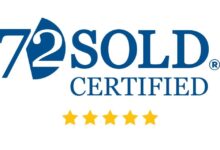Top 7 Methods for Erasing Body Ink: A Comprehensive Guide
Body ink can be a significant part of one’s identity, but there are times when individuals may wish to remove their tattoos for various reasons. Whether due to changes in personal taste, lifestyle, or professional requirements, tattoo removal has become a common pursuit. Fortunately, advancements in technology and techniques have made it easier than ever to erase unwanted body ink. Here, we explore the top seven methods for effective tattoo removal.
1. Laser Tattoo Removal
One of the most popular and effective methods for Gold Coast tattoo removal is laser treatment. This procedure involves using high-intensity light beams to break down the ink particles in the skin. The body then naturally processes and eliminates these particles over time. Multiple sessions are typically required, depending on the tattoo’s size, color, and age. While it can be costly, many individuals find it to be the most effective method with minimal scarring.
2. Dermabrasion
Dermabrasion is a more invasive procedure that involves sanding down the top layers of skin to remove the tattoo. This method can be effective for certain types of tattoos but may lead to more significant pain and longer recovery times. It is essential to consult with a qualified dermatologist to understand the potential risks and benefits.
3. Surgical Excision
For those with small tattoos, surgical excision may be a viable option. This technique involves cutting out the tattooed skin and stitching the surrounding skin back together. While it offers immediate results, it can leave a scar, and recovery time can vary. This method is best suited for tattoos that are small and not situated in sensitive areas.
4. Chemical Peels
Chemical peels use strong acids to exfoliate the skin, helping to fade tattoos over time. This method is less common for complete removal but can be effective in lightening the tattoo to prepare for further treatment, such as laser removal. Multiple sessions are usually required, and the results can vary based on the tattoo’s ink composition and depth.
5. Tattoo Removal Creams
Over-the-counter tattoo removal creams claim to fade or remove tattoos without professional intervention. However, these products often lack scientific backing and may not deliver the promised results. Additionally, they can cause skin irritation or allergic reactions. It is advisable to approach these creams with caution and consult a professional if considering this route.
6. Intense Pulsed Light (IPL) Therapy
Intense Pulsed Light therapy is another method that uses light to target tattoo ink. Similar to laser removal, IPL can break down the ink particles, allowing the body to absorb them. This method is less common and may not be as effective as laser treatments, but it can be an option for certain skin types and ink colors.
7. Cover-Up Tattoos
If complete removal is not feasible or desired, consider getting a cover-up tattoo. Skilled tattoo artists can design a new tattoo that incorporates or obscures the old one, allowing for a fresh start without the need for removal. This method can be a creative solution for those who still appreciate body art but wish to alter their existing designs.
In conclusion, removing a tattoo is a process that requires careful consideration of the available methods and their potential outcomes. Each approach has its benefits and drawbacks, and what works for one person may not be suitable for another. Consulting with a professional experienced in tattoo removal can help guide you through the options and determine the best course of action for your specific situation. Whether you choose laser treatment, dermabrasion, or another method, the journey to eliminate body ink can lead to a renewed sense of self and freedom.




